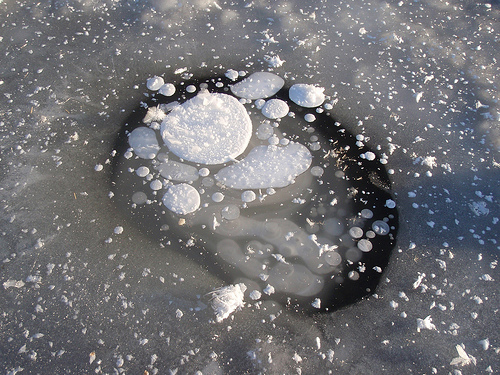Researchers in British Columbia have found that eagles detect and avoid wind turbines during migration by increasing their flight altitudes. The researchers visually tracked golden eagle migration over a commercial wind farm before and after construction. They monitored the commercial wind installation in the Hart Range near Chetwynd British Columbia – the Dokie 1 Wind Energy […]
Tag: environment

Engineering wood fibers
Wood is a popular and cheap building material, but it swells and shrinks with moisture, limiting its potential. A new study by materials scientists and mechanical engineers shows that most of the swelling and shrinking is limited to the cell walls. The complex nanostructure of wood actually prevents it from expanding even more than it already […]

The Deepwater Horizon spill and fish heart defects
A new study shows that fish embryos developed heart defects when exposed to crude oil levels similar to that found in oil spills like the Deepwater Horizon disaster. The study looked at bluefin and yellowfin tuna as well as amberjack, species that are highly valued in commercial fisheries. Stock of Bluefin tuna that spawns in the […]

Predators are the main drivers of the Arctic tundra food chain
A new study shows that predators (Arctic fox, wolves, stoat, snowy owls) are the main drivers of the Arctic tundra food chain. Usually, predators regulate the food chain in a given ecosystem, but researchers previously thought that this view did not apply to the Arctic tundra as there are too few herbivores such as caribou, […]

Shrubs duke it out in a warming Arctic
As the Arctic tundra warms, will fast-growing leafy plants come to dominate the landscape, or will they lose out to the slow-but-steady evergreens? The results of a 8-year experiment using plastic greenhouses to simulate warmer temperatures seem to indicate the latter. Even though deciduous trees are better at exploiting fertile environments, the tougher evergreens grew […]

Methane emissions from ecosystems to increase 
Microbes found in aquatic, wetland and rice-paddy ecosystems emit methane instead of carbon dioxide during respiration. As temperatures rise, the emissions from these organisms rise too. A new study shows that methane emissions from aquatic microbes will increase with temperature faster than either respiration or photosynthesis of other living organisms. Methane is a more […]

Antarctic moss returns to life after 1,500+ years under ice
Researchers were able to revive and grow 1500 year-old Antarctic mosses which stayed inactive under the ice. Prior to this finding, regeneration from frozen plant material had only been successfully demonstrated after a maximum 20 years. Until now only microbes had been shown to be capable of revival after so many years on hold.

Low-carbon strategies for cities 
A team of civil engineers has conducted a detailed analysis of 22 cities from around the world, which could help policymakers choose the right tools to combat climate change on a municipal level. Depending on their climate, industrial base and population densities, cities can use a variety of tools and techniques to lower their carbon emissions. […]
Ice anomalies in the Mackenzie Delta may help explain sea ice loss
As the climate warms, scientists predict more precipitation, higher river flows and earlier ice breakup in the spring. But even though ice is breaking up earlier on Canada’s longest river – the Mackenzie – its total discharge has not changed. A new analysis shows that the cause may instead be reduced snow accumulation in the […]

Western oil buried under eastern sand 
Researchers showed that most of the actual sand at the Athabasca oil sands in Alberta is originally from the east. By analysing trace amounts of uranium and lead in individual sand grains called zircons, researchers showed that most of the sediment was originally eroded from faraway places, such as the Appalachian mountains. This improved understanding […]

Chlorine gas in the Arctic 
Scientists measuring atmospheric gases in Alaska have detected surprisingly high levels of chlorine gas (Cl2) – up to 400 parts per trillion. The gas likely results from a light-driven chemical reaction between ground-level ozone and chloride salts in snow and ice. The resulting gas and its breakdown products can have a profound effect on the […]
Royal Society Report on Marine Biodiversity | Webinar recording
Royal Society of Canada Report on Marine Biodiversity – January 31, 2012 Canada has the longest marine coastline of any country in the world, along three of the world’s oceans. Is Canada filling its role as steward and protector of our valuable ocean resources and marine biodiversity? How do we stack up to other nations? And what more […]
